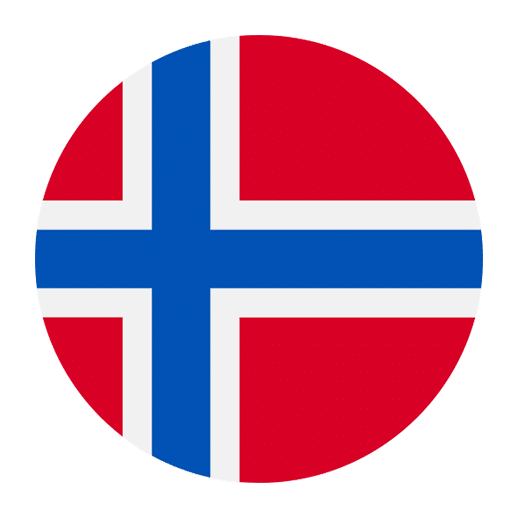When learning a new language, one of the most fascinating aspects is understanding how different words can carry various meanings based on context, pronunciation, or spelling. This is especially true in Norwegian, a language rich with nuances and subtleties. In today’s article, we will explore two such words: “stjerne” and “stjern,” which translate to “star” and “stern” in English, respectively. Despite their similar appearances, these words have distinctly different meanings and uses. By the end of this article, you will have a deeper understanding of these words and how to use them correctly in your Norwegian language journey.
Understanding “Stjerne”
The word “stjerne” is the Norwegian term for “star.” It is a noun that can refer to celestial bodies, celebrities, or even symbols used in various contexts. Let’s delve into the different uses and meanings of “stjerne.”
Astronomical Stars
In its most literal sense, “stjerne” refers to the luminous bodies we see in the night sky. These astronomical stars are massive spheres of plasma held together by gravity, emitting light and heat from nuclear reactions at their core. For example:
– “Jeg så en klar stjerne i går kveld.” (I saw a bright star last night.)
– “Orion er en kjent stjernebilde.” (Orion is a well-known constellation.)
In these sentences, “stjerne” clearly refers to the celestial objects that we see in space.
Symbolic Stars
“Stjerne” can also be used to describe symbolic stars, such as those found on flags, awards, or ratings. For instance:
– “Den amerikanske flagget har femti stjerner.” (The American flag has fifty stars.)
– “Restauranten fikk fem stjerner i anmeldelsen.” (The restaurant received five stars in the review.)
In these examples, “stjerne” is used to represent a symbolic or figurative star, highlighting excellence or importance.
Celebrity Stars
In Norwegian, as in many other languages, “stjerne” can refer to a famous person, particularly in the entertainment industry. This usage is akin to calling someone a “star” in English:
– “Hun er en stor filmstjerne.” (She is a big movie star.)
– “Den populære sangeren er en internasjonal stjerne.” (The popular singer is an international star.)
Here, “stjerne” denotes someone who has gained fame and recognition in their field.
The Meaning and Use of “Stjern”
Contrary to “stjerne,” the word “stjern” in Norwegian has a different origin and meaning. “Stjern” is an archaic or dialectal form of “stern,” which means “rudder” or “helm” in English. It is less commonly used in modern Norwegian but can still be encountered in certain dialects or historical texts.
Nautical Context
In the context of navigation and sailing, “stjern” refers to the rudder or helm of a ship. The rudder is a crucial component used for steering the vessel. For example:
– “Kapteinen stod ved stjernen og styrte skipet.” (The captain stood at the helm and steered the ship.)
– “Uten en fungerende stjern kan ikke skipet navigere riktig.” (Without a functioning rudder, the ship cannot navigate properly.)
In these sentences, “stjern” clearly refers to the nautical equipment used for steering.
Historical and Dialectal Usage
While “stjern” is not commonly used in contemporary standard Norwegian, it may still appear in historical texts or certain regional dialects. Understanding its context can provide valuable insights into the linguistic evolution and regional variations of the Norwegian language.
– “I gamle dager brukte de ordet ‘stjern’ for å beskrive skipets ror.” (In the old days, they used the word ‘stjern’ to describe the ship’s rudder.)
– “Denne dialekten har fortsatt noen gamle ord som ‘stjern’.” (This dialect still has some old words like ‘stjern’.)
Such examples highlight the historical and regional significance of the word.
Comparing “Stjerne” and “Stjern”
While “stjerne” and “stjern” may look similar, their meanings and uses are distinct. “Stjerne” is a common and versatile word in modern Norwegian, used to describe stars in the sky, famous people, or symbols. On the other hand, “stjern” is an older or dialectal term primarily associated with nautical contexts.
Phonetic Differences
The pronunciation of these words also differs slightly, which can help in distinguishing them when spoken. “Stjerne” is pronounced as /ˈstjæːrnə/, with a clear emphasis on the ‘j’ sound. “Stjern,” however, is pronounced as /ˈstjærn/, with a softer and shorter ending.
Contextual Clarity
Context plays a crucial role in understanding and using these words correctly. When talking about celestial objects, celebrities, or symbolic representations, “stjerne” is the appropriate choice. Conversely, when discussing navigation or historical texts, “stjern” may be more relevant.
Common Mistakes and Tips
Language learners may sometimes confuse “stjerne” and “stjern” due to their similar spellings. Here are a few tips to avoid common mistakes:
1. **Pay Attention to Context**: Determine the context in which the word is used. If it relates to stars, fame, or symbols, “stjerne” is the correct term. If it pertains to navigation or historical usage, consider “stjern.”
2. **Practice Pronunciation**: Focus on the subtle differences in pronunciation. Practicing with native speakers or using language learning apps can help reinforce the correct usage.
3. **Read Widely**: Exposure to different texts, including historical documents and regional dialects, can enhance your understanding of less common words like “stjern.”
4. **Use Language Resources**: Utilize dictionaries, language guides, and online resources to clarify any doubts. Many language learning platforms offer explanations and examples to help you grasp the nuances of words.
Practical Applications and Exercises
To solidify your understanding of “stjerne” and “stjern,” let’s explore some practical applications and exercises.
Exercise 1: Identifying the Correct Word
Fill in the blanks with either “stjerne” or “stjern”:
1. Den klareste ______ på himmelen kalles Sirius.
2. Kapteinen holdt fast ved ______ mens skipet navigerte gjennom stormen.
3. Han drømmer om å bli en stor film______.
4. I den gamle boka står det beskrevet hvordan de brukte ______ til å styre skipet.
Answers:
1. stjerne
2. stjern
3. stjerne
4. stjern
Exercise 2: Sentence Construction
Create sentences using both “stjerne” and “stjern” to describe different scenarios. For example:
1. Describe a night sky scene using “stjerne.”
2. Describe a historical sailing scene using “stjern.”
Sample Sentences:
1. “På en klar natt kan man se tusenvis av stjerner blinke på himmelen.” (On a clear night, one can see thousands of stars twinkling in the sky.)
2. “I det gamle skipet stod kapteinen ved stjernen og navigerte gjennom farlige farvann.” (In the old ship, the captain stood at the helm and navigated through dangerous waters.)
Conclusion
Understanding the differences between “stjerne” and “stjern” is crucial for mastering Norwegian vocabulary and usage. While “stjerne” is a versatile word commonly used to describe stars, celebrities, and symbols, “stjern” has a more specific and historical context related to navigation and dialects.
By paying attention to context, practicing pronunciation, and engaging with various texts, language learners can effectively differentiate between these words and use them accurately. As with any language learning journey, consistency and exposure are key. So, keep exploring, practicing, and immersing yourself in the rich linguistic landscape of Norwegian. Happy learning!

